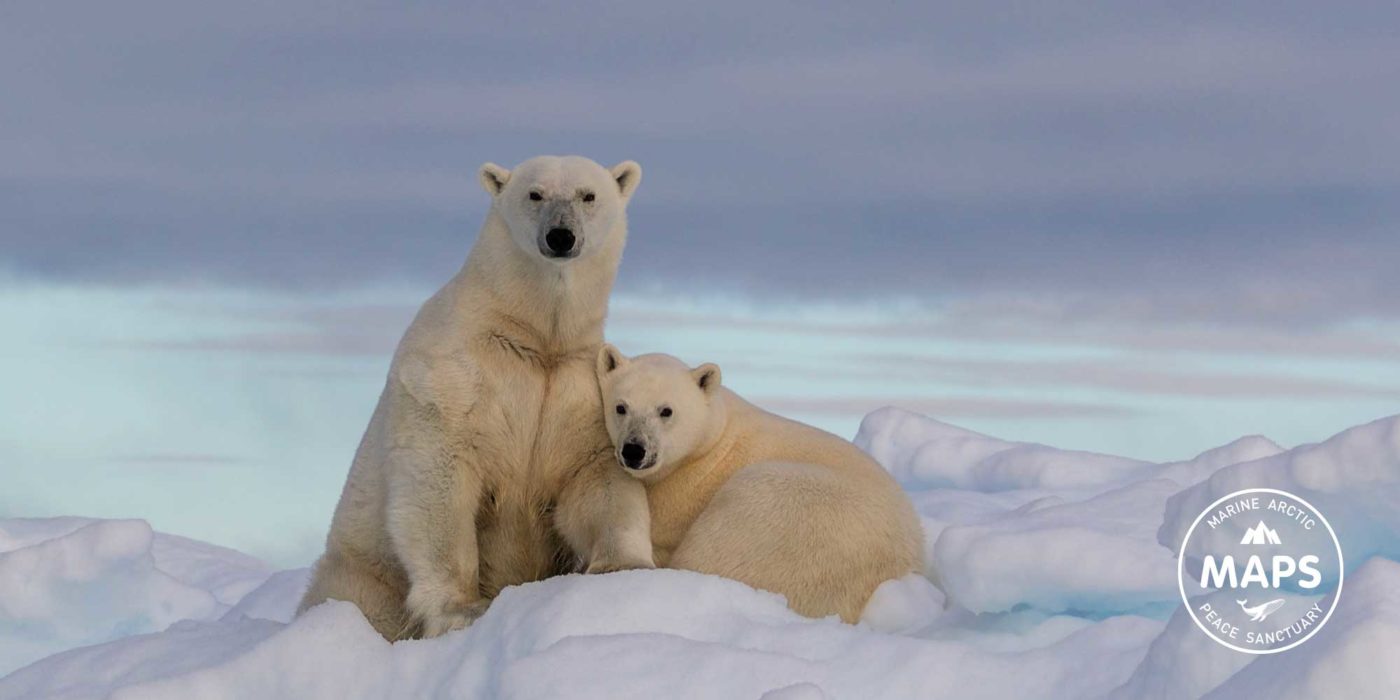The Arctic Ocean is a unique ecosystem in the world. For centuries, it has served as the perfect habitat for the bountiful and rich marine life calling it home. Seventeen different species of whales inhabit the Arctic Ocean. It’s also home to seals, walruses, polar bears, hundreds of species of fish and millions of seabirds. There are also tiny organisms living within the sea ice, including bacteria, and unicellular plants and animals. These inhabitants all depend on the Arctic sea ice for their survival.
For example, narwhals, lovingly dubbed “unicorn of the sea” for their long, spiraling tusks, need the ice to protect against predators. The movement patterns of bowhead whales, listed as an endangered species in many countries, are influenced by the melting and freezing of the ice. Walruses and polar bears also depend on robust sea ice, which they use as a platform for hunting and resting. Harp seals are a prime example of why sea ice matters. They birth their pups on Arctic ice floes. During their first six weeks of life, before they grow large enough to spend most of their time in the water, the pups rest on the ice to nurse.
But today, profound changes are taking place in the delicate Arctic ecosystem that threaten these magnificent creatures. In the spring and summer of 2019, monthly average temperatures for the high seas ranked within the three warmest since 1979. Air temperatures over the Arctic Ocean for these months were as much as 3 to 4 degrees Celsius above the 1981 to 2010 reference period average. The Arctic is warming at least twice as fast as the global average, and melting Arctic land ice is pouring 14,000 tons of water per second into the ocean. This means that the ice which has sheltered and allowed these precious marine animals to thrive, is disappearing.
Predatory killer whales are increasingly moving into newly-melted northern waters where narwhals and bowhead whales used to be safe. The loss of a sea ice platform is already disrupting normal feeding patterns for walruses and polar bears, leading to lower reproduction rates and poor overall health. And as the ice melts, harp seal pups are forced into the water before they are ready to fend for themselves. These young pups are especially at risk for hypothermia, starvation, and being crushed by moving ice in the Arctic. It remains unknown how or whether Arctic species will be able adapt to the changing environment in order to survive.
Humans, no matter where we live on Earth, are also directly impacted. This is because Arctic ice is the key to maintaining balanced global weather patterns and sea levels, which influence our food supply, access to clean water, habitable land and our very safety. The decline of Arctic land ice is causing sea levels to encroach on cities all over the world from Shanghai to Amsterdam to Rio. If we don’t act now, sea level rise will redraw the map of the world and displace billions. Scientists at Columbia University predict that “the Arctic will continue to unravel, leading to…dramatic changes from white, ice-covered, and stable to a new future of instability with abrupt, disruptive changes, difficult-to-predict interactions, and global chain reactions.”
The crisis is made far worse because the melting Arctic Ocean is now subject to growing commercial interest, which seek to pursue oil and gas drilling, international shipping, and other activities harmful to the remaining sea ice and vulnerable Arctic Ocean ecosystem. MAPS, the Marine Arctic Peace Sanctuary, is a practical and effective response, transforming the entire Arctic Ocean above the Arctic Circle into the largest preservation area the world has ever seen. MAPS prohibits all commercialization, industrialization, and militarization in this delicate environment, so all life on Earth can continue to thrive.
We no longer live in an era when we have the luxury to consider one isolated region as if it were separate from the whole. What occurs in the Arctic directly and indirectly affects our entire world. With its historically impenetrable sea ice, the Arctic Ocean has always been a natural sanctuary. MAPS ensures it remains so forever, protecting narwhals, bowheads, walruses, polar bears, seals, and humans alike, and helping to keep our respective homes safe.
By Parvati Magazine Staff











